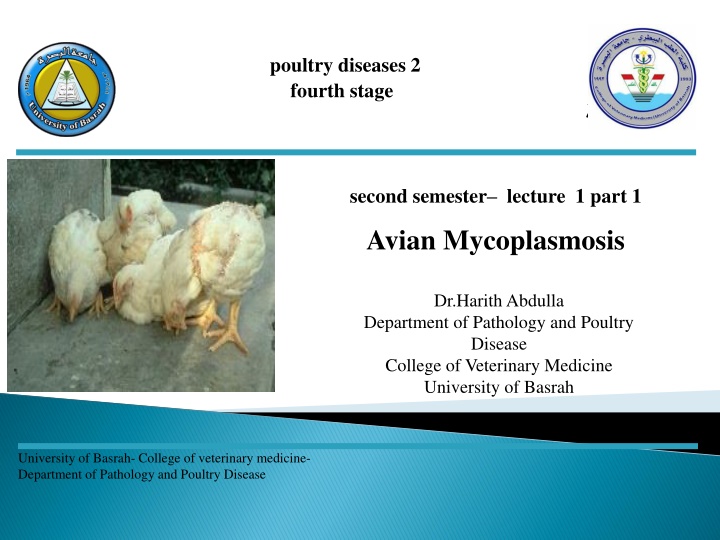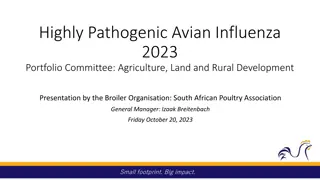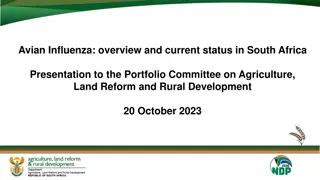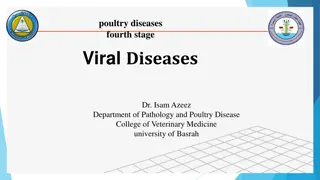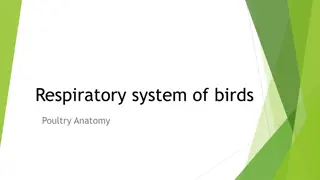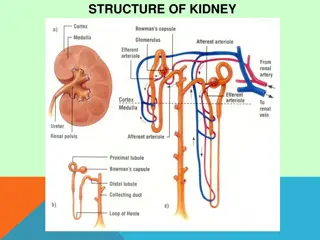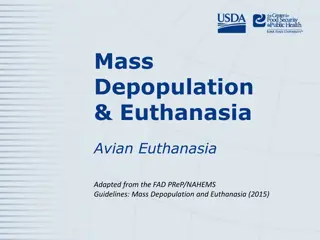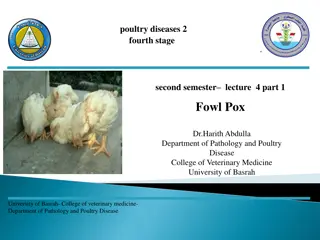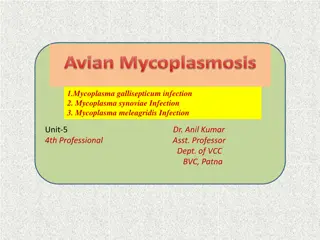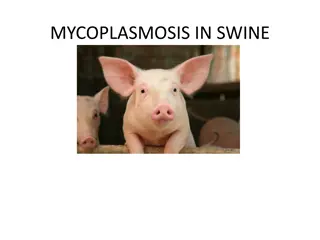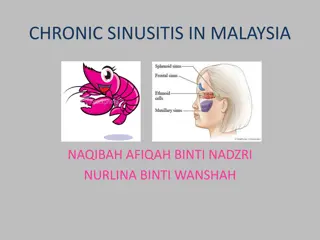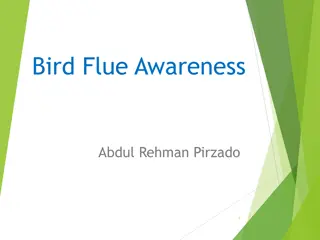Avian Mycoplasmosis - Causes, Symptoms, and Control Measures
Avian Mycoplasmosis, caused by Mycoplasma gallisepticum, manifests as Chronic Respiratory Disease in chickens and Infectious Sinusitis in turkeys. Learn about transmission, symptoms, histopathology, diagnosis, and control strategies.
Download Presentation

Please find below an Image/Link to download the presentation.
The content on the website is provided AS IS for your information and personal use only. It may not be sold, licensed, or shared on other websites without obtaining consent from the author.If you encounter any issues during the download, it is possible that the publisher has removed the file from their server.
You are allowed to download the files provided on this website for personal or commercial use, subject to the condition that they are used lawfully. All files are the property of their respective owners.
The content on the website is provided AS IS for your information and personal use only. It may not be sold, licensed, or shared on other websites without obtaining consent from the author.
E N D
Presentation Transcript
poultry diseases 2 fourth stage second semester lecture 1 part 1 Avian Mycoplasmosis Dr.Harith Abdulla Department of Pathology and Poultry Disease College of Veterinary Medicine University of Basrah University of Basrah- College of veterinary medicine- Department of Pathology and Poultry Disease
Mycoplasma gallisepticum causes : A -Chronic Respiratory Disease (CRD):In chickens. B Infectious Sinusitis: In Turkeys. causes : Definition: An infectious and contagious disease characterized by respiratory signs: Rales, coughing, sneezing ,gasping and nasal discharge. Definition:
1-Bacterial infections: Escherichia coli ,Hemophilus paragallinarium 2-Viral infection. 3-Vaccination : Newcastle Disease, Infectious Bronchitis. 4- Stress. 5- Gases: NH3 6- Dust. 7- Irregular temperature.
1-The disease transmitted through eggs(Vertical transmission). 2-Spread by air-born dust or droplets and contact. 3- Carriers. Symptoms: 1-Nasal discharge. 2-Foamy exudates in eyes and sinuses. 3-Tracheal rales. 4-Gasping. 5-Sneezing. Symptoms:
1-Catarrhal exudates in respiratory tract. 2-Caseous exudates in the air sacs. 3-Airsacs may have beaded appearance. 4-Fibrinous perihepatitis and fibrinous pericarditis. Histopathology: 1-Thickening of mucous membrane. 2-Mononuclear cell infiltration in the mucous membrane of respiratory tract . Histopathology:
1-Signs. 2- Lesions. 3-Serology ( Agglutination ). 4- Isolation of the organism.
1- Eradication is the best method of controlling mycoplasmosis. 2-Start with mycoplasma free chicks. 3-Do not use mycoplasma recovered birds for breeding. 4-Delay vaccination when birds are under stress. 5-Proper ventilation. 6-Vaccination. 7- Egg treatment (heating, dipping with antibiotics, spraying) .
1- Tetracycline. 2- Tylosin is the drug of choice.
Causes: Airsacculitis in Turkey Poults(Immature Turkey). Causes:
Definition: Infectious Synovitis :Is a disease of chickens and turkeys characterized by joint infections and respiratory disease . The causative agent is Mycoplasma synoviae . Definition:
Epizootiology As in Mycoplasma gallisepticum. Epizootiology:
1-Pale comb. 2-Lameness and distended joints of legs and wings especially hock joint and foot pads. 3-Breast blisters. 4- Greenish diarrhea. 5-Respiratory distress. 6- High morbidity but low mortality.
1-Exudate in the joint at first is mucoid and later becomes creamy and then caseous and yellowish. 2-The liver is enlarged and greenish , and the kidney swollen. 3-Air sacs may be filled with caseous exudates. Diagnosis: 1- History. 2- Signs. 3-Lesions. 4- Serology. 5- Isolation and identification of the organism. Diagnosis:
